I drove 10 hours to watch a 9-minute Rocket Lab launch from Virginia and it was glorious
The launch on Tuesday (Jan. 24) took just over 9 minutes. It was totally worth it.
NEW YORK — It's not every day you watch a rocket streak into space over Virginia's Eastern Shore, acing its first-ever liftoff from American soil.
That was the sight I beheld this week after a long, long drive from my home in northern New Jersey outside of New York City to NASA's Wallops Flight Facility on Wallops Island, Virginia, to watch Rocket Lab's Electron booster make its inaugural U.S. launch. It takes 5 hours to get to Wallops from my house without traffic. It also takes 5 hours to drive back.
The launch on Tuesday (Jan. 24) took just over 9 minutes. It was totally worth it.
Related: Rocket Lab launches 1st Electron booster from US soil in twilight liftoff
Rocket Lab's U.S. debut
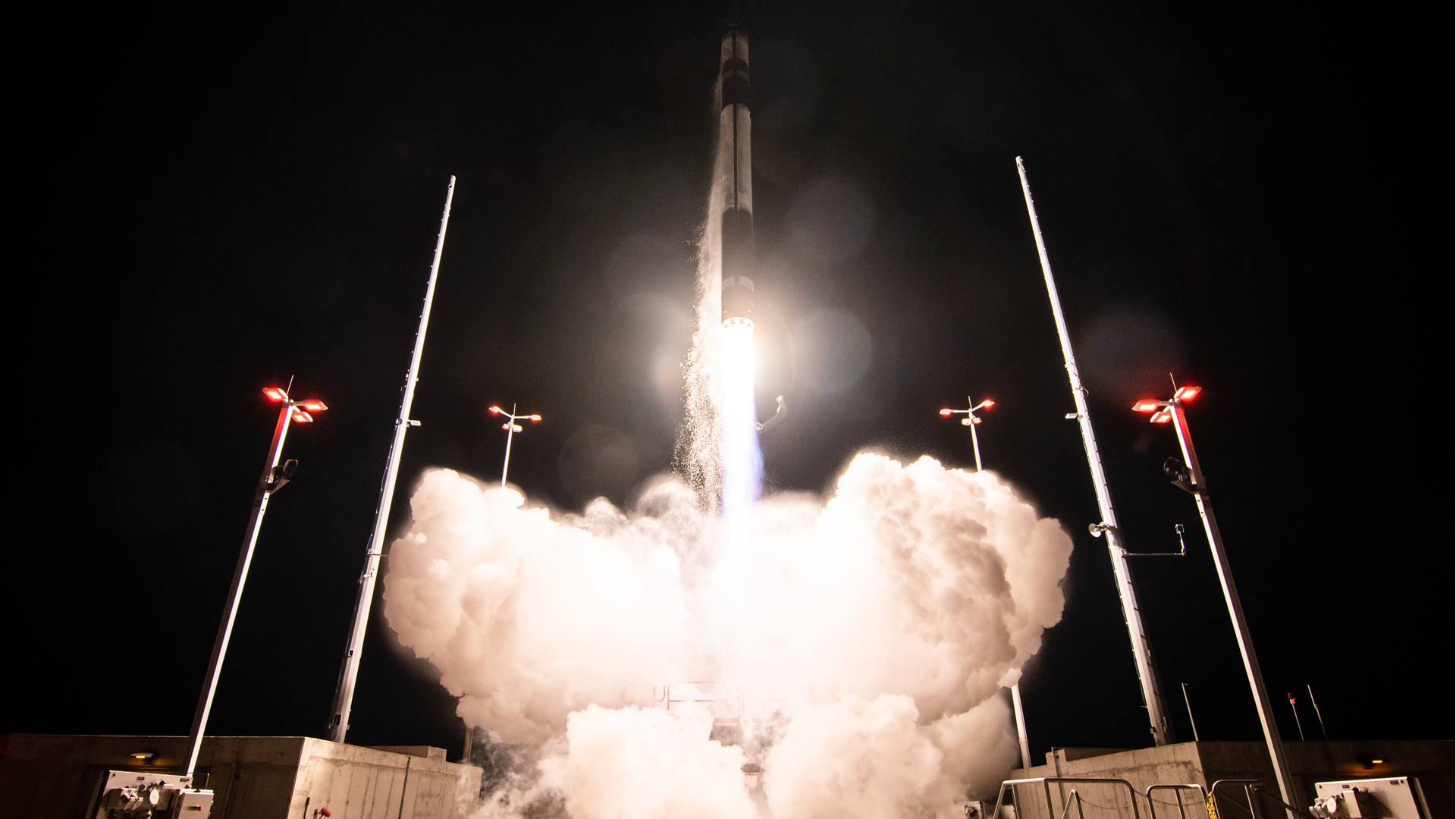
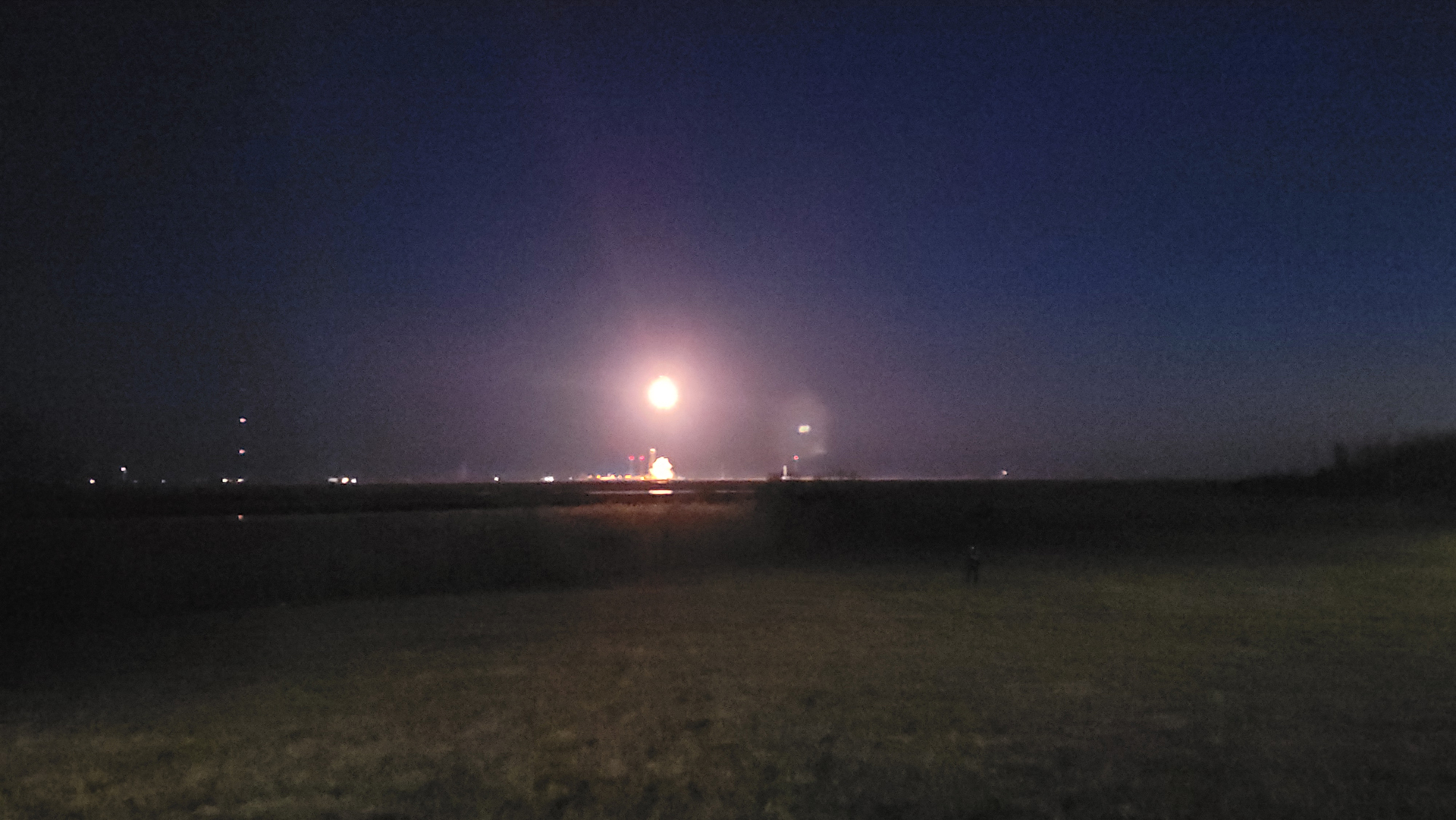
First, a confession. I missed Rocket Lab's first attempt to launch its debut Electron rocket flight from Virginia on Dec. 18 because weather delays pushed the flight into conflict with some family obligations. That means I never had the chance to score a Rocket Lab press pass for posterity on my office wall. Sad, I know, but at least I didn't drive nearly 300 miles (480 kilometers) and come up empty-handed on the launch itself.
Second, what exactly was happening? Well, the gist is this: Rocket Lab, a private space launch company based in Long Beach, California, was counting down toward its first U.S. rocket launch after more than 30 liftoffs from its two pads on the Mahia Peninsula of New Zealand, home to the company's Electron factory (and CEO Peter Beck). After checking out launch sites across the U.S., Rocket Lab opted for Wallops Flight Facility, which hosts a flurry of sounding rocket launches each year as well as less-frequent liftoffs of Northrop Grumman's Antares rockets sending Cygnus cargo spacecraft to the International Space Station for NASA. This first U.S. launch by Rocket Lab carried three radio surveillance satellites built by the Virginia-based company HawkEye 360.
Located on Virginia's Eastern Shore, NASA's Wallops Flight Facility is nestled near the Assateague Island National Seashore and picturesque Chincoteague Island. It's a pretty place, and you can find an excellent homemade Rocket Fuel ice cream (I think there's cayenne pepper in it? It's delicious) during tourist season. Rocket Lab even named the recent launch "Virginia Is For Launch Lovers," a nod to the state's tourism motto "Virginia Is For Lovers," which you'll see as you enter the state and your GPS says "Welcome to Virginia." The commercial launch site is overseen by the Mid-Atlantic Regional Spaceport authority. (That's MARS, if you like space acronyms, which we do.)
Get the Space.com Newsletter
Breaking space news, the latest updates on rocket launches, skywatching events and more!
For Rocket Lab, its new Launch Complex 2 offers the company a toehold in the United States, which can make securing launch contracts with the U.S. government (including the military) a bit easier. The company is also building a new factory next door to Wallops for its Neutron rocket, a larger reusable booster that will launch from Wallops and spit payloads into orbit out of a "hungry hippo" nose cone. I am excited for that one, mostly because of my well-documented love of hippos.
For NASA, Rocket Lab's launch was a chance to usher in some new technology. The launch marked the first flight of the NASA Autonomous Flight Termination Unit (NAFTU), designed to destroy a rocket if it veers off course during launch. NASA had problems developing the system, delaying Rocket Lab's first Wallops launch for a couple of years. Rocket Lab then adapted the system for Electron launches, the first company to do so.
So that's the background. TL;DR, it's a tech achievement for NASA, a giant leap for regular U.S. launches for Rocket Lab and a potential tourism boost for Virginia, since Rocket Lab wants to eventually launch Electrons from Wallops every month.
For me, Rocket Lab's Electron launch was another milestone: My first in-person launch since 2019 due to the COVID pandemic and the first launch from a pad I actually had the chance to touch when it opened. (You can see a video all about that). I did try to see NASA's Artemis 1 moon mission launch — twice, in fact, last August and September — but it was delayed both times.) I do love rocket launches, and it was time to get my space groove back.
And so, into the car I went.
On the launch road again
T-5 hours until I reach @NASA_Wallops for @RocketLab's 1st US launch ever. You can watch it live w/me (hopefully) on @SPACEdotcom at 6 pm ET. pic.twitter.com/MPmqMy2G7dJanuary 24, 2023
The drive through New Jersey is always the longest leg on a Wallops trip. While I usually listen to podcasts on the way down, I've been on a Critical Role Dungeons & Dragons tear from Geek & Sundry recently, so I used the drive to listen in on Episodes 2 and 3 of the first campaign through the Dwarvish mines of Kraghammer. That was fun.
Before I knew it, I was through Delaware, Maryland and well into Virginia, arriving around 4:15 p.m. local time. (I left the house at 10:30 a.m. and stopped for lunch.) I even had time to see Rocket Lab's new site near Wallops, a sleek black building with the company's logo on it and what looks like room to grow.
While I did get a little lost (I missed a street sign for a road that wasn't on my GPS), I ended up right on time to meet Rocket Lab at 4:30 p.m. to drive out to the press viewing site. The two-hour launch window opened at 6 p.m., nearly an hour after sunset, so there wasn't long to wait. And we headed out.
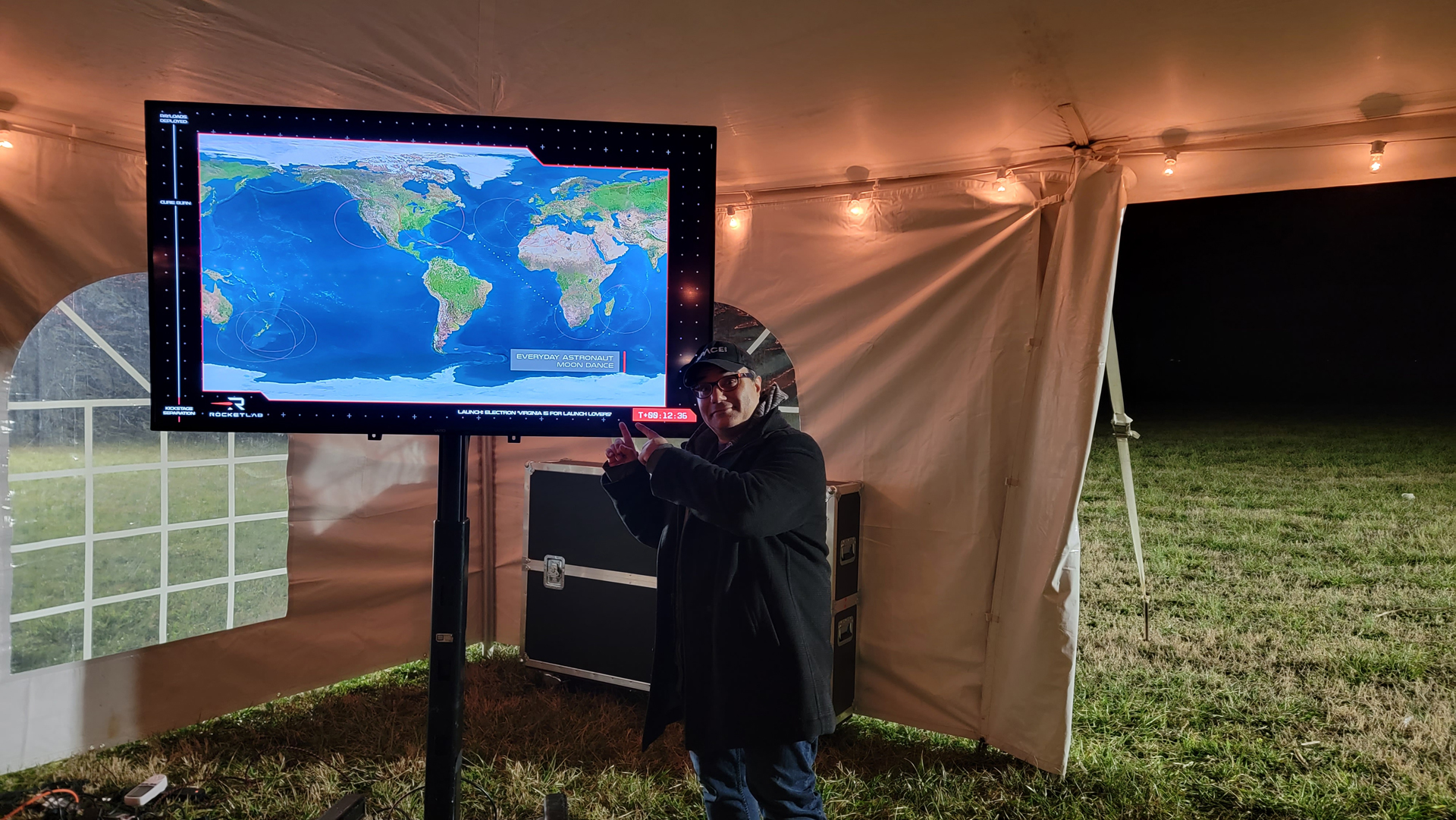
It's January on the East Coast, so it was a cool night on the wetlands of Wallops Island, about 36 degrees Fahrenheit (2 degrees Celsius). Chilly and brisk, but I found it comfortable. And as the sun set and evening set in, the night sky became a wonderland.
A brilliant crescent moon lit up the sky with Jupiter and Venus clearly visible. Rocket Lab's Electron stood on its pad a few miles away, bathed in white spotlights as chatter from the company's launch control center spilled out from a TV inside the press tent. A security guard with a fabulous spotted dog named Storm greeted us.
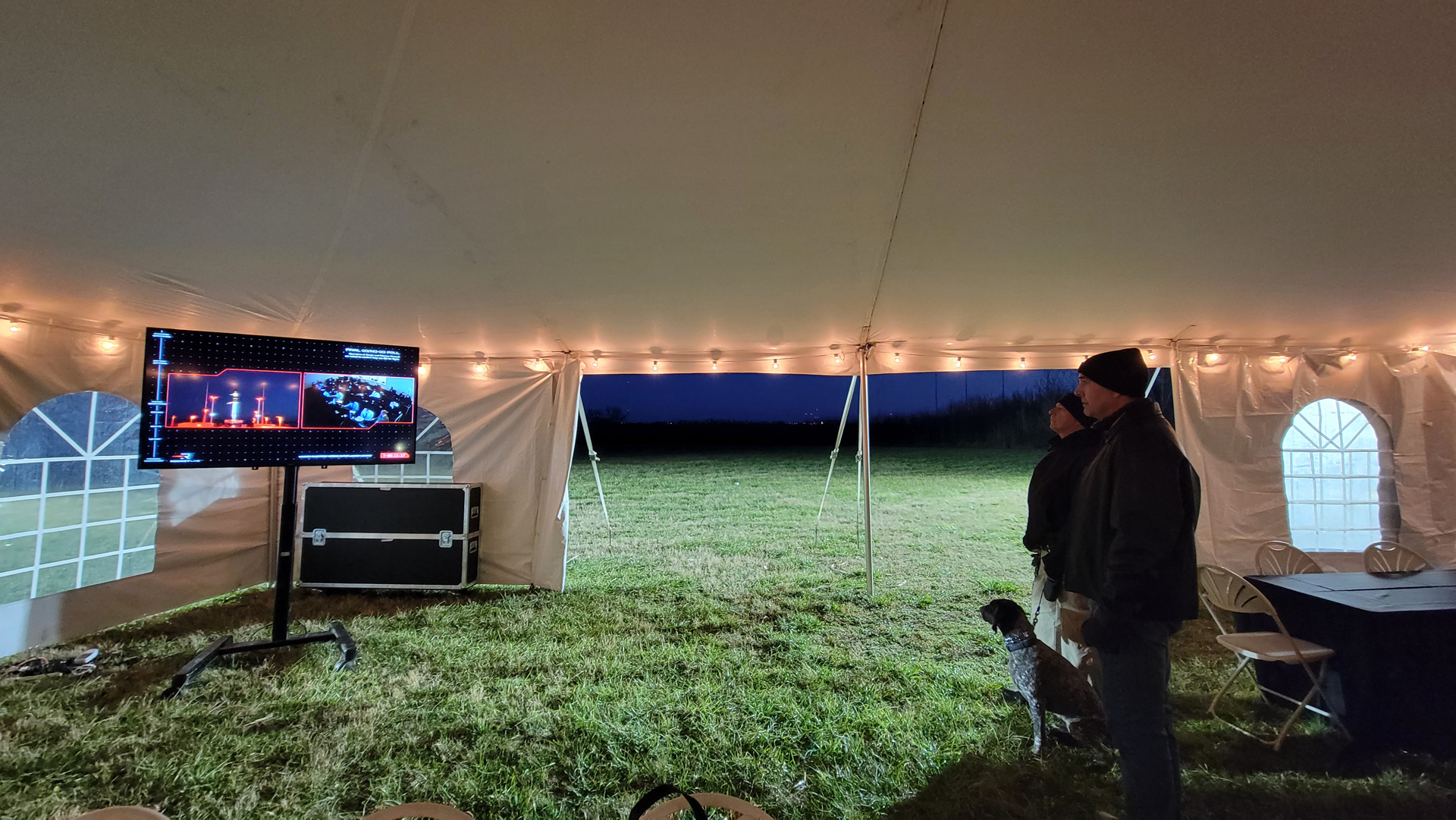
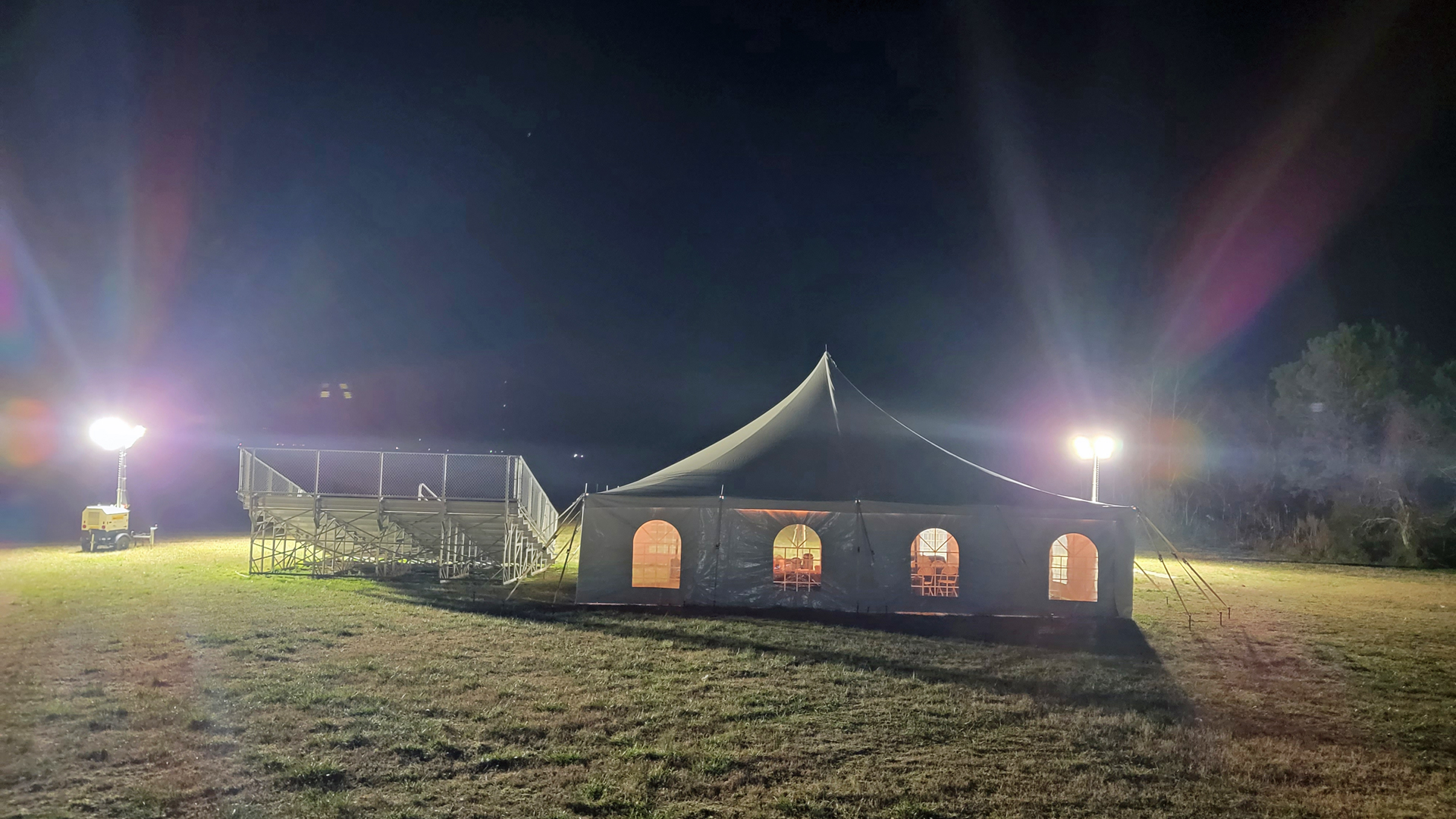
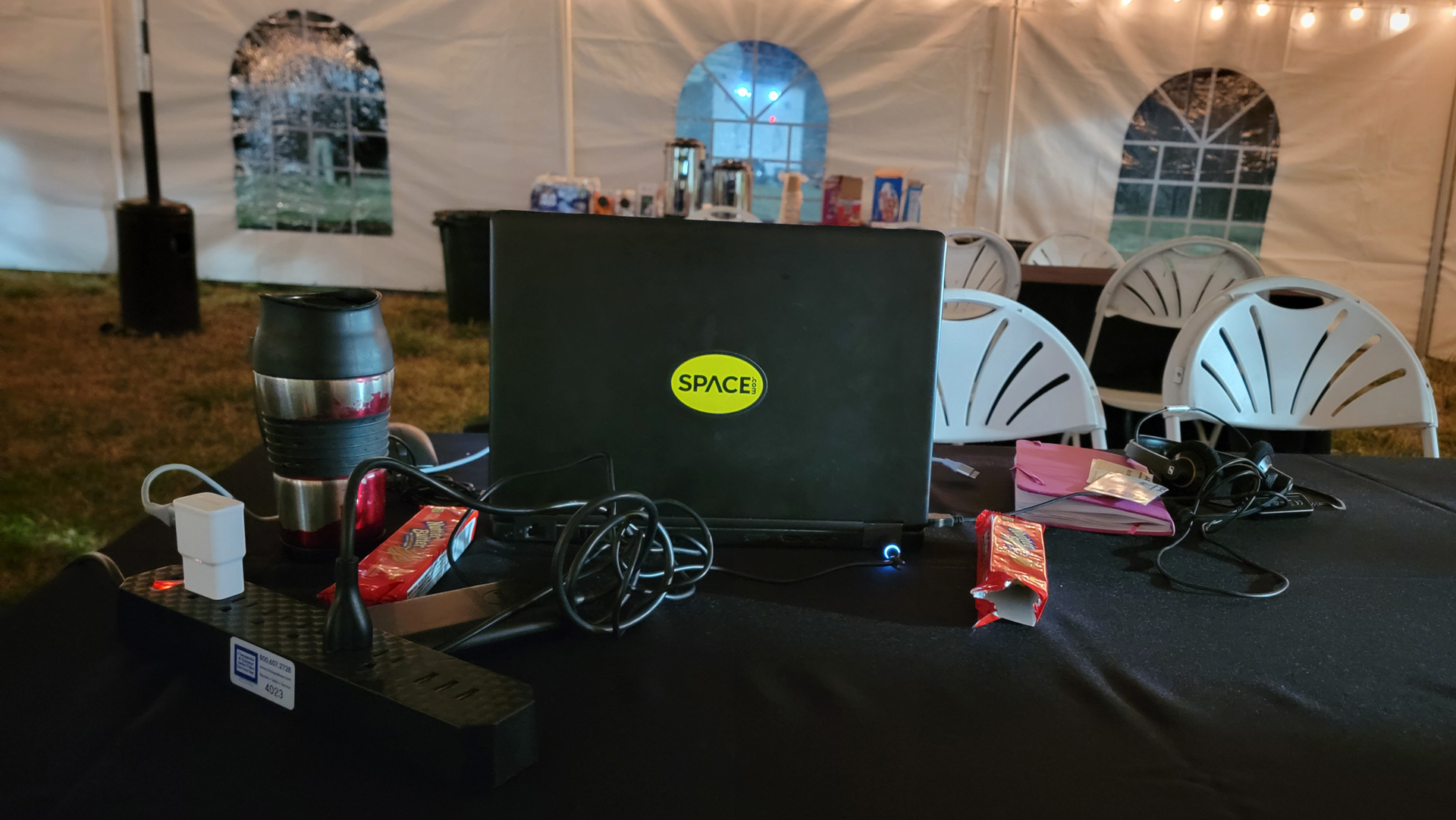
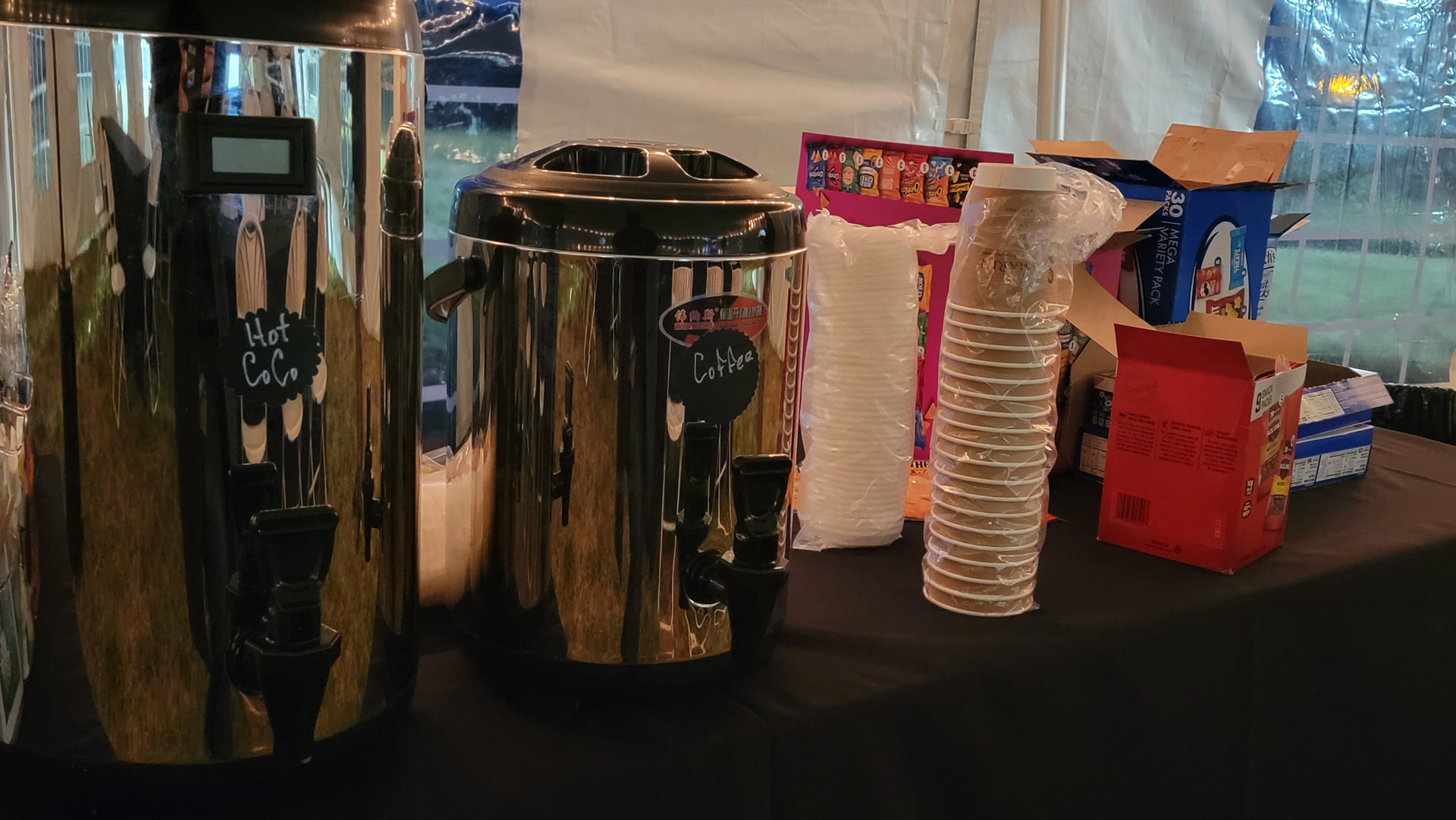
"Is she trained for launches?" one reporter asked.
"Explosives," the guard answered back. She's a good dog.
There were a dozen or so reporters and photographers at the press site, with more V.I.P.s and dignitaries at a separate tent well away from the press (more on that later). Still, anticipation was high. Would Rocket Lab get off the ground or delay? The weather forecast called for a 90% chance of good conditions, NASA said.
Rocket Lab's red glare
The launch itself was a bit of a surprise.
At the T-3 minute mark, I joined the photographers and reporters on a nearby hill to await liftoff, but the loudspeakers were silent. We heard no audible countdown (the TV back in the press tent wasn't loud enough, and Wallops' press site doesn't have a giant clock), but the early evening sky lit up with a brilliant orange light as the nine Rutherford engines of Rocket Lab's Electron ignited a mix of liquid oxygen and rocket-grade kerosene to propel itself spaceward.
We saw the launch first, with the rumble of the Electron's engines reaching us a few seconds later (you can feel it in your chest) as the rocket powered through its ascent. As it turned east to head out over the Atlantic Ocean, the Electron arced over the stars of the Orion constellation, its engine plume winking out briefly just over 2 minutes into the flight as the first stage separated from its upper stage, only to reappear nearly immediately as a single Rutherford engine ignited on the upper stage to continue the ascent.
For a brief instant, the rocket's plume lit up as it passed through Orion, then it returned to a small but brilliant dot. While we had ringside seats, the launch may have been visible from South Carolina to Maine, and from as far inland as West Virginia. From liftoff to second stage shutdown, the launch lasted 9 minutes, 18 seconds.
T-1 hr to @RocketLab's 1st US launch from @NASA_Wallops. Here is the @SPACEdotcom view from the press site. pic.twitter.com/8WHtyCttsUJanuary 24, 2023
This was my first in-person rocket launch in nearly four years (since 2019), and to say it was amazing doesn't come close to doing it justice. Seeing a rocket launch in person can be a moving experience. You stand there watching a collection of metal, composites, propellant and payloads streak into the the sky with the knowledge that humans from Earth have built something that, right then, is leaving the planet behind (in this instance, forever).
I highly recommend seeing a rocket launch at least once in your life. If you live on the East Coast, NASA's Wallops Flight Facility is a great venue that — depending on your location — is just a few hours drive away, and hotels are fairly easy to book. The visitor's center at Wallops Flight Facility sometimes hosts the public, and it has viewing guide options to watch liftoffs from nearby parks and shorelines. There's even a NASA Wallops app to help you follow the launches.
If you want to see a rocket launch but don't want to invest in airplane tickets and a trip to Florida for something that could be delayed or scrubbed by weather, then a drive to Wallops may be right for you.
After the launch, we retreated back inside the press tent to warm up, have some coffee or hot cocoa and snacks. I heard Rocket Lab's V.I.P. tent may have had some tonier treats, food and drinks, but hey, they had reason to celebrate. The twilight launch itself was enough for me.
"It's neat that they do it right at sundown," Fran with Chesapeake and Potomac Audio Visual Services, which set up the power strips and livestream TV system at the press site for reporters, told me as he packed up the gear. It was his first launch.
"You can see the engines screaming bright. Good stuff."
Good stuff, indeed.
Email Tariq Malik at tmalik@space.com or follow him @tariqjmalik. Follow us @Spacedotcom, Facebook and Instagram.
Join our Space Forums to keep talking space on the latest missions, night sky and more! And if you have a news tip, correction or comment, let us know at: community@space.com.

Tariq is the Editor-in-Chief of Space.com and joined the team in 2001, first as an intern and staff writer, and later as an editor. He covers human spaceflight, exploration and space science, as well as skywatching and entertainment. He became Space.com's Managing Editor in 2009 and Editor-in-Chief in 2019. Before joining Space.com, Tariq was a staff reporter for The Los Angeles Times covering education and city beats in La Habra, Fullerton and Huntington Beach. In October 2022, Tariq received the Harry Kolcum Award for excellence in space reporting from the National Space Club Florida Committee. He is also an Eagle Scout (yes, he has the Space Exploration merit badge) and went to Space Camp four times as a kid and a fifth time as an adult. He has journalism degrees from the University of Southern California and New York University. You can find Tariq at Space.com and as the co-host to the This Week In Space podcast with space historian Rod Pyle on the TWiT network. To see his latest project, you can follow Tariq on Twitter @tariqjmalik.








